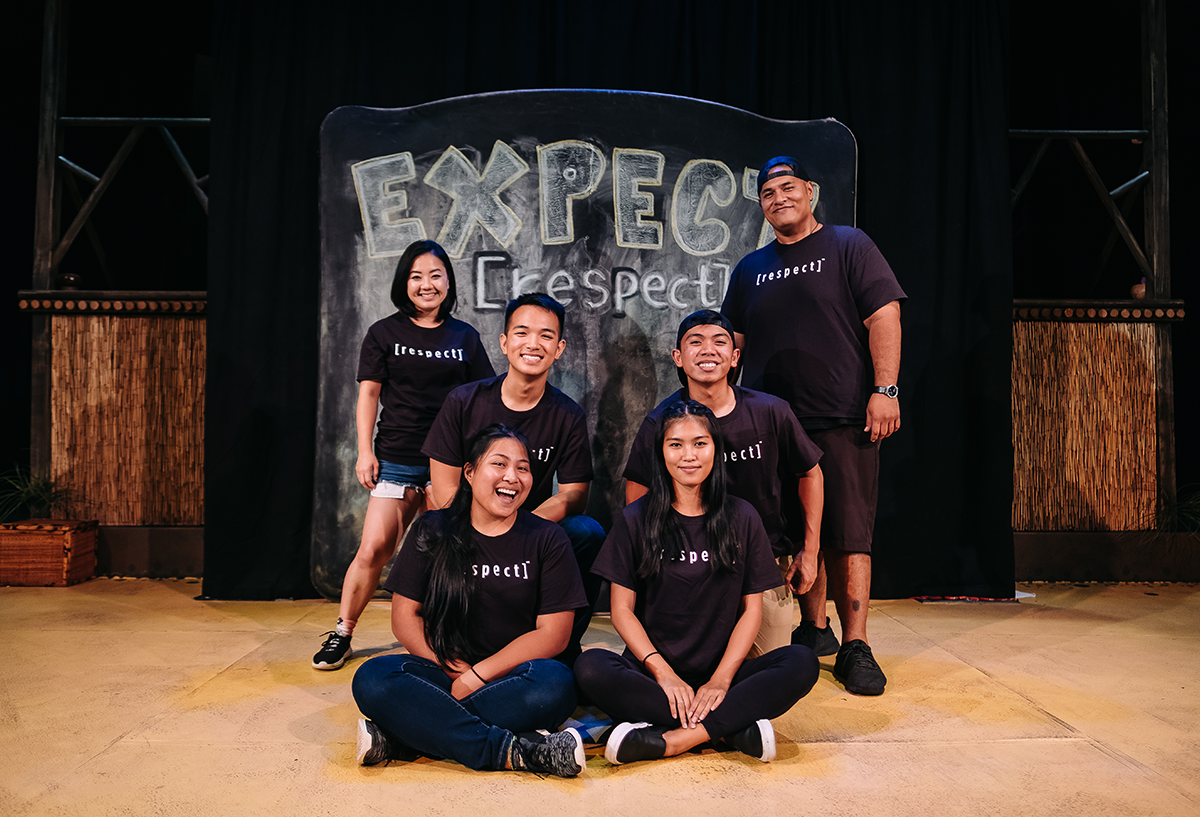
Theatre is a laboratory for empathy. The entire art form is built around the prospect that in the safety of a “made up” story, fictional characters can lead an audience into very real emotions. There is no known civilization that does not engage in some sort of “theatre” and quite often the stories a society chooses to tell are celebrations of it’s greatest joys and fantasies or explorations of it’s darkest fears.
For over 13 years, Honolulu Theatre for Youth has been collaborating with SATC to create theatrical vehicles to help students build an empathetic understanding of their roles in preventing sexual violence. This is some of the most challenging and important work HTY has done in our 64 years as an organization.
Over these many years we have created a variety of programs; one specifically for groups of teenage males, another for females, a rally engaging professional artists of different disciplines in building student activism around this issue, a program focused on the internet’s role in this type of violence and most recently a collaboration with T-Shirt Theatre for middle school students. We have employed dozens of artists, reached thousands of students and assisted hundreds of teachers to begin one of the hardest (but most important) conversations they will ever have with their students.
Doing this work we have listened to heartbreaking stories, talked through horrible misunderstandings about dating and gender stereotypes, worked past nervous giggles and awkward questions, always with SATC by our side guiding the path forward. Over and over we have watched how gentle and personal a room becomes as the students connect with a story at their own pace. Because the story is fiction, students can first talk about the characters and then form connections to their individual roles in preventing this behavior.
From students detained in correctional facilities to those at elite private schools the reactions are surprisingly similar. Despite misconceptions, social pressures and the awkwardness of having a frank conversation with teachers and adults, almost every student wants to have this discussion and they overwhelmingly agree that individually and collectively they can play a role in treating others with respect.
We have studied the data and evaluated the impact and we know first hand this program is making a difference. It is impact that sticks. The stories range from the group of Senior guys (who, after seeing our play) independently decided to wear [Respect] shirts on Valentine’s Day, to the brave student who completely silenced a giggling classroom by sharing that their Mother had been a victim of sexual violence. Even the quiet boy in the back of a class nodding to himself as he watched other students give examples of how they might respectfully ask for consent for a kiss, is a story worth noting. That nod might indicate a vital piece of empathy for a partner the boy has never met. Before he goes in for a kiss he may take a breath, consider his partner and ask how they are feeling. In that breath is a chance for a mutual relationship to begin, which is after all, a chance at real romance.
We cannot entrust these conversations to locker rooms and social media. We must create windows for all young people to imagine healthy relationships and see the cost of the alternative. We are deeply honored to have worked with SATC over the years to create this type of theatrical window. A teacher whose class sees a show will have access to a full curriculum of sexual violence prevention material and the training to use it. A curious teen can follow up with an entire media campaign of information and most importantly a victim can access 24-hour support whenever they are ready to do so. Our role is to make that conversation vital and vibrant and it has been a role we have cherished for over a decade.
We humbly thank SATC the many partners who have supported us along this journey for trusting us with this important work.
![[ respect ]™](/media/1135/00-respect_logo_black.svg)
